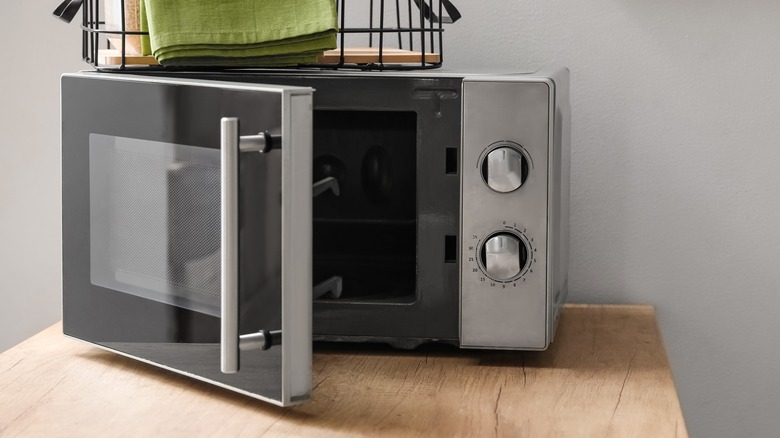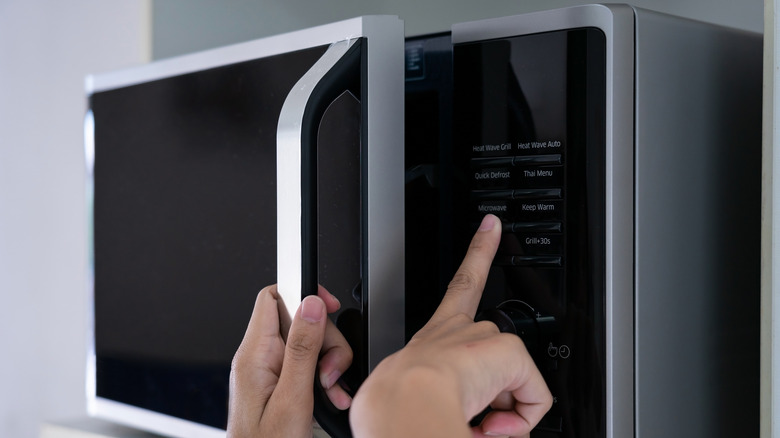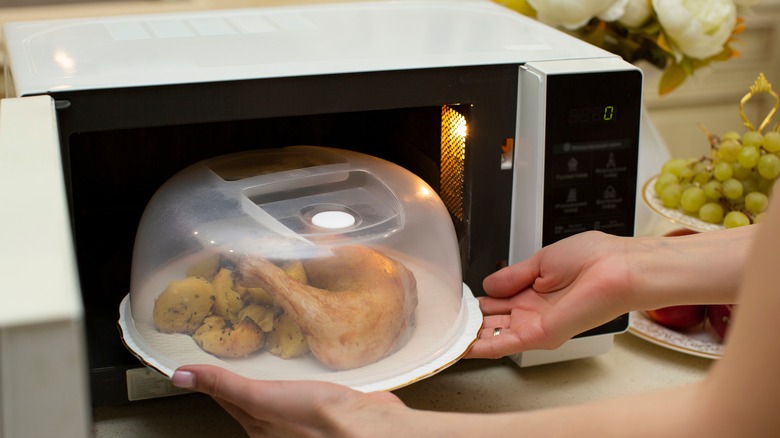What Microwave Power Levels Actually Mean
In 1945, Percy Spencer, an engineer who was testing a vacuum tube called a magnetron, accidentally melted the chocolate bar in his pocket, giving birth to what we now call the microwave (via Popular Mechanics). Today this indispensable culinary tool is in over 90% of American homes and is prized for adding convenience to our hectic lives. Whether it is for a bowl of popcorn or leftovers, most of us, if we are being honest, would be quite lost without these trusty kitchen companions.
Microwaves are so simple and easy to use that most of us don't actually understand how they work. We simply throw in a food or drink, hit the start button, and voila — hot grub or chai! Some folks only use one button (add 30 seconds), which they press repeatedly until they get their desired cook time, but there are many options when using, one could argue, the handiest appliance in our kitchen.
The power levels on a microwave are underutilized because many aren't exactly aware of how to use them. And if that's you, it's all about to change.
How does it work?
Unlike conventional ovens, where we adjust the cooking temperature up or down, the power settings on a microwave just intermittently turn on and off the electromagnetic waves (aka microwaves) that radiate and heat up our food. Many modern microwaves have at least five settings and some have power levels that range from 1-10. By default, the microwave cooks things at the maximum level, such that the microwave energy is being applied the entire time. But if it were reduced to a medium setting, or 5, the microwave energy would only be on for half of the time (via GE Appliances).
We can adjust the power level to suit whatever we are trying to cook or heat and to avoid a mishap or ruined meal. According to Cook's Illustrated, microwaves can only penetrate about an inch into any food, and on a high setting, the surface can be rapidly heated up (sometimes even burnt) without the inside of the food ever getting cooked. Many of us have seen this when putting dense foods, like lasagna, in the microwave on high. A lower power setting still applies microwaves to the surface, but because it cycles on and off, it allows time for heat to conduct to the inside of the food without constant radiation on the outside.
What power should we use?
As a rule of thumb, the default, or high power should be used for liquids like water, soup, and beverages, along with foods that are less than ½ inch thick, like popcorn (via Cook's Illustrated). Eggs can also be cooked at the highest power, but only as long as it is heated in liquid, as with poached eggs.
Medium or 50% power should be used for items that can't be stirred, like lasagna and whole roasts or chicken. This setting is also useful for softening things like butter. A medium or low power setting is best for dairy or delicate sauces. Grains, which require a more gentle heat, should also be microwaved at a low setting, to avoid them burning or spilling over, according to Anyday. Defrosting frozen food requires a lower power level (between 1 and 4) because a microwave needs liquid to generate heat; and by first melting the outer part of the item, it's then able to efficiently heat the rest.
To help us out even more, many modern microwave models have power level settings for specific purposes like defrost, crisp, steam and convention, that take some of the guesswork out of the power settings (per Kitchen Aid). Despite the simplicity that has allowed us to be lazy at times, utilizing the power levels on a microwave is an absolute game changer.


